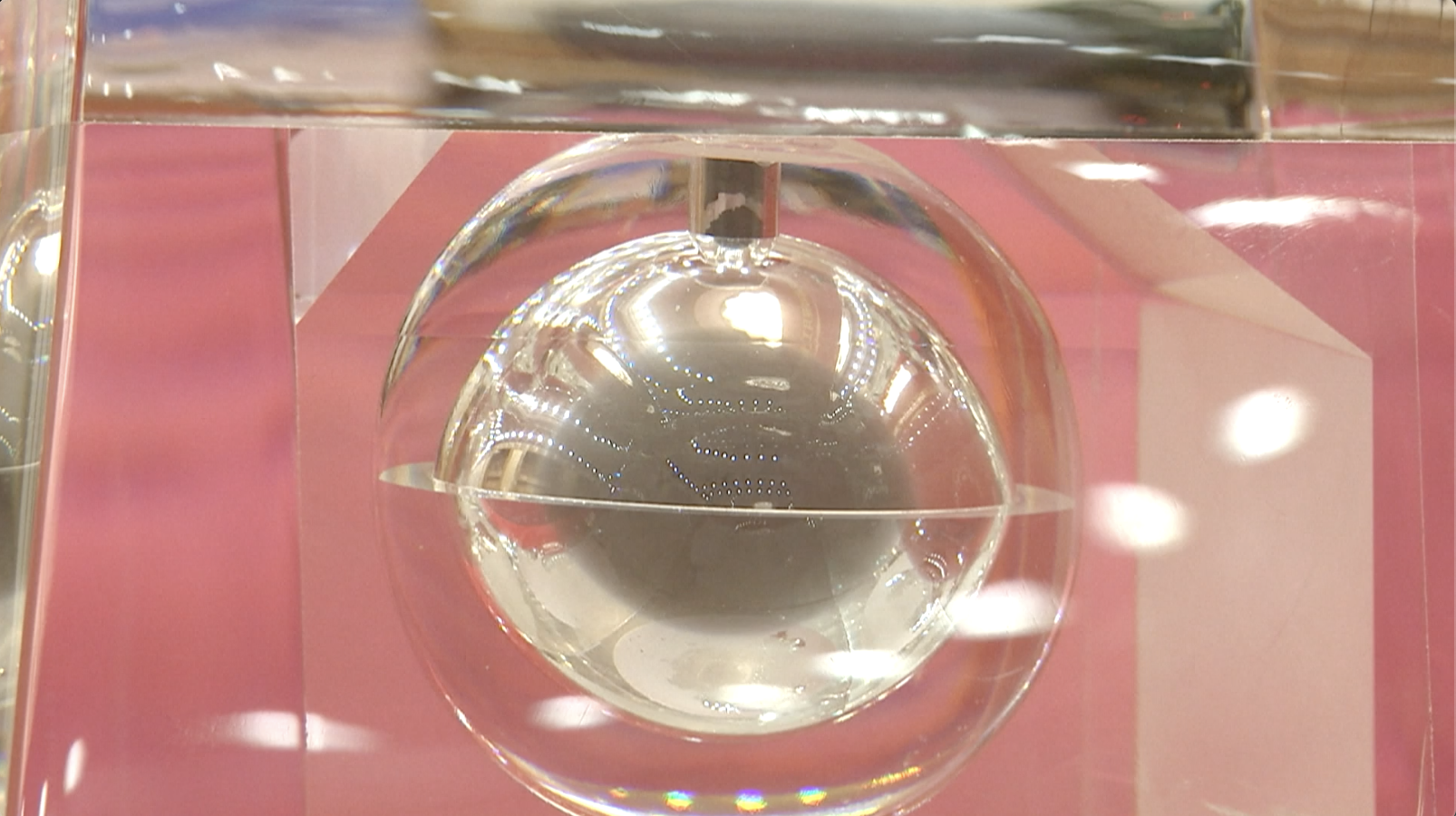China offers 1st glimpse inside Chang'e 5 moon rock sample

China has revealed the first images of lunar samples from its Chang’e 5 mission following a meeting between China’s president and mission representatives.
The Chang’e 5 reentry capsule delivered to Earth 3.81 lbs (1.731 kilograms) of lunar samples collected from Oceanus Procellarum on Dec. 16. Now, China has released images of what scientists expect will be the youngest lunar samples so far. Samples from the mission will also go on display in March in a public exhibit.
The new images came as Chinese president Xi Jinping met and congratulated Chang’e 5 space scientists and engineers at the Great Hall of the People in Beijing on Monday (Feb. 22).
Related: The latest news about China's space program
The photographs reveal that the samples contain dark grains and fine material, as well as apparent basaltic glasses created by lunar volcanism, according to a description released with the images.
China has stated its openness to sharing portions of the samples with scientists across the world. In January, the China National Space Administration (CNSA) published procedures for requesting access to the samples.
At the National Museum of China in Beijing, the public will also get a chance to view some of the invaluable material, inside a container made from artificial crystal and shaped like a Chinese bronze ritual wine vessel, according to press reports.
Get the Space.com Newsletter
Breaking space news, the latest updates on rocket launches, skywatching events and more!
Here we have a first glimpse of some of the 1,731 grams of lunar samples collected by Chang'e-5 and delivered to Earth in December. Images: CCTV; CNSA/CLEP pic.twitter.com/2E0zHw9fohFebruary 22, 2021
The container was designed with a number of cosmic references in mind. Its height is 15.1 inches tall (38.44 centimeters) and 9 inches wide (22.89 cm). The two metric numbers correspond with the average Earth-moon distance, of 238,855 miles (384,400 kilometers) and the 22.89 days Chang'e 5's voyage lasted.
The samples are contained within a spherical void in the center of the crystal, representing the moon, while a Chinese map lies below.
During the congratulatory meeting, Xi stated that the success of Chang'e 5 marked the conclusion of China’s initial three-step lunar exploration program, which consisted of orbiting, landing on the moon, and returning with samples.
The Chinese leader then emphasized the importance of embarking on the fourth phase of China's lunar exploration program. China is planning a new sample-return mission, named Chang'e 6, to the lunar south pole around 2024. Chang’e 7 and 8 will each involve landers, rovers, relay satellites and orbiters and will attempt a range of science and technology test objectives.
Russia recently stated it intends to sign a memorandum of understanding with China to cooperate on establishing an international lunar research station.
Follow us on Twitter @Spacedotcom and on Facebook.
Join our Space Forums to keep talking space on the latest missions, night sky and more! And if you have a news tip, correction or comment, let us know at: community@space.com.

Andrew is a freelance space journalist with a focus on reporting on China's rapidly growing space sector. He began writing for Space.com in 2019 and writes for SpaceNews, IEEE Spectrum, National Geographic, Sky & Telescope, New Scientist and others. Andrew first caught the space bug when, as a youngster, he saw Voyager images of other worlds in our solar system for the first time. Away from space, Andrew enjoys trail running in the forests of Finland. You can follow him on Twitter @AJ_FI.









